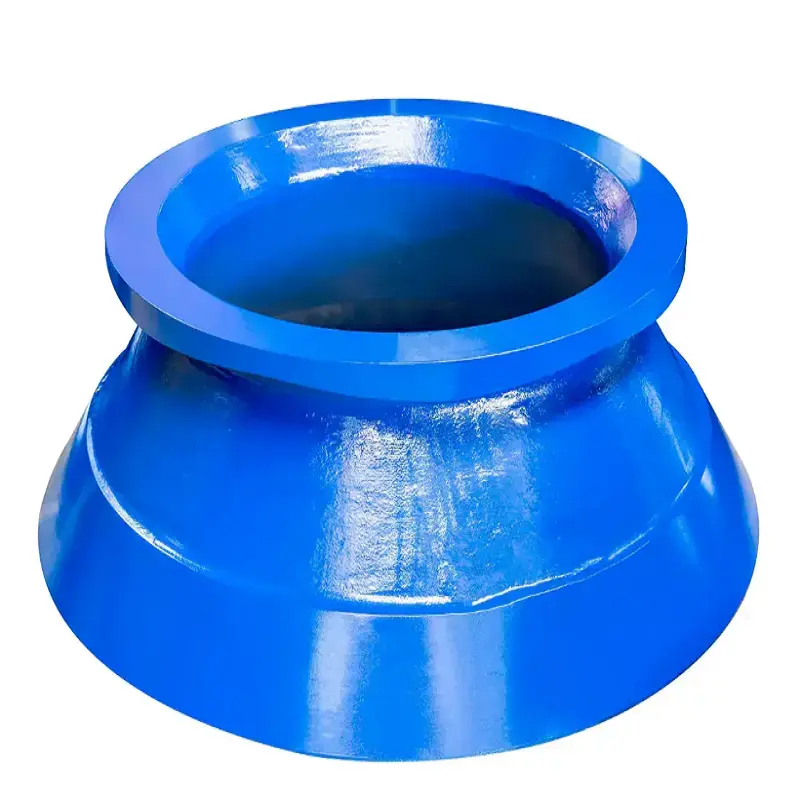How to choose the right plate hammer and buffer plate material?
During the operation of the crusher, the plate hammer and the buffer plate are the key components that come into direct contact with the materials and withstand the impact force. Their materials directly affect the working efficiency, maintenance cost and overall service life of the crusher. Choosing the appropriate wear-resistant materials is crucial for extending the service life of these vulnerable parts. This article will offer some suggestions to help you make a wise choice.
First, the selection of the material for the hammer
The plate hammer is the component in the crusher that bears the greatest impact force, so it needs to have extremely high wear resistance and impact resistance.
1.High manganese steel
High manganese steel is an ideal material for plate hammers due to its property of being able to undergo work hardening when impacted. This material has a relatively low hardness during the first impact, but as the number of impacts increases, its surface gradually hardens, thereby enhancing its wear resistance.
2. High-chromium alloy
High-chromium alloys are renowned for their excellent wear resistance and impact resistance, and are suitable for materials with high hardness. This alloy contains elements such as chromium, nickel and molybdenum, forming hard carbides that effectively resist wear.
3. Ceramic materials
Ceramic materials have been increasingly widely used in the application of crusher plate hammers in recent years, especially alumina ceramics. They have extremely high hardness and wear resistance, and are suitable for crushing extremely hard materials, but the cost is relatively high.
Second, the selection of cushioning material
The main function of the buffer plate is to absorb the impact force and reduce the damage to other components of the crusher.
1.Rubber materials
Rubber is a commonly used cushioning material, featuring excellent elasticity and shock absorption. It can effectively absorb impact forces, reduce noise and vibration, but its wear resistance is relatively poor and it is suitable for occasions where impacts are not too frequent.
2. Polyurethane
Polyurethane is a material between rubber and plastic, featuring good wear resistance and impact resistance. It is more durable than rubber and is suitable for working environments with medium impact strength.
3. Composite materials
Composite materials such as carbon fiber reinforced plastics combine the advantages of multiple materials and possess excellent strength and toughness. This material can withstand considerable impact forces while maintaining a relatively light weight, making it suitable for applications with high performance requirements.
Third, evaluation of wear-resistant materials
When choosing wear-resistant materials, the following factors need to be comprehensively considered:
1. Material characteristics
Understand the hardness, particle size and corrosiveness of the crushed materials, and select materials with corresponding wear resistance.
2. Working conditions
Considering the working frequency, impact strength and environmental conditions of the crusher, select materials that can adapt to these conditions.
3. Economy
Evaluate the cost-benefit ratio of materials and select those with high cost performance.
4. Processability
Considering the processing difficulty and cost of the materials, select materials that are easy to process and maintain.
Fourth, Conclusion
Choosing the appropriate plate hammer and buffer plate material is crucial for improving the working efficiency of the crusher and reducing maintenance costs. By understanding the characteristics and applicable scenarios of different materials, you can make wiser choices. The selection of wear-resistant materials not only extends the service life of the crusher components but also reduces the downtime caused by component replacement, thereby enhancing the overall production efficiency. When purchasing parts for a crusher, it is essential to take into account the material properties, working conditions, economy and processability to ensure the stable operation and long-term benefits of the crusher.




